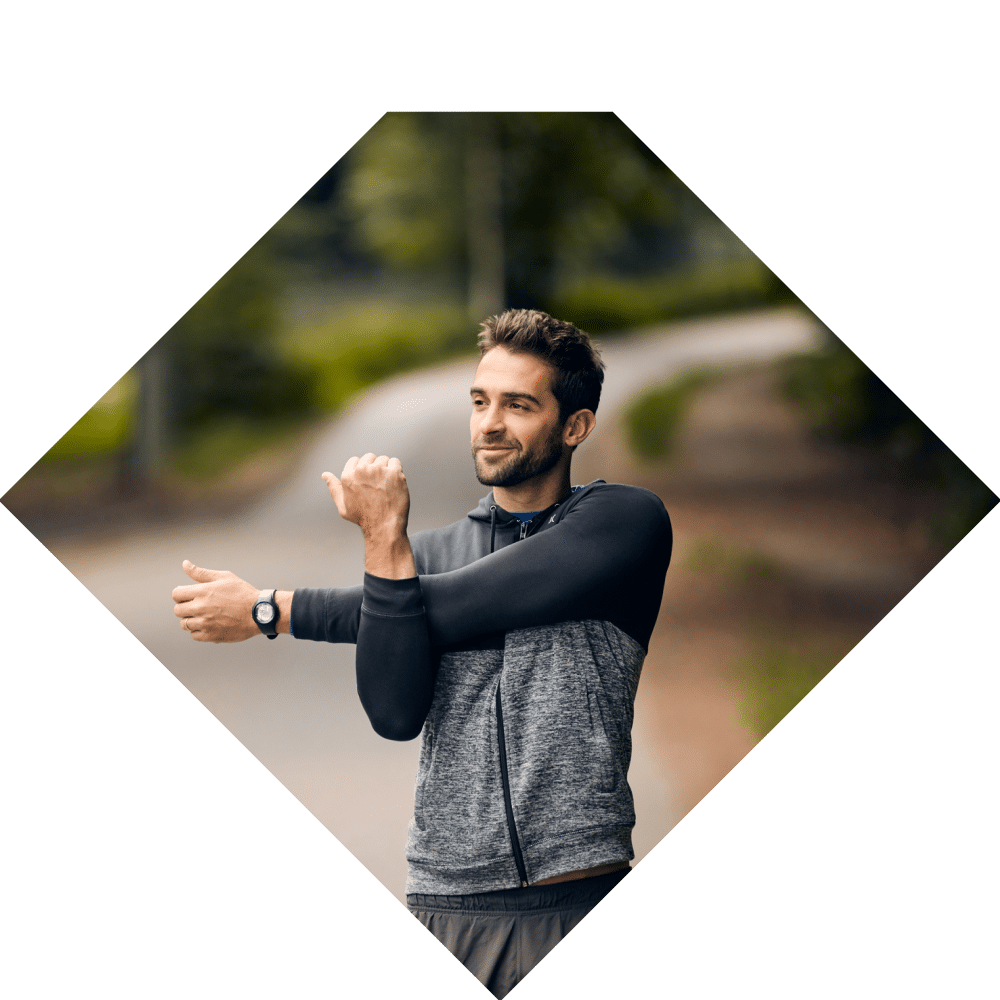Longstreet Clinic sports medicine physician Ian Quinn, D.O., says it’s like clockwork. A few times a year – once just after New Year’s and again when the weather begins to turn nice – patients begin to file into his office with the same complaint:
“I hear it all the time: Doc, I decided to get back to exercising, and I just overdid it,” Dr. Quinn said.
Whether it’s someone looking to get healthier, create their best “beach body,” or simply pick up a new hobby, Dr. Quinn says that almost all of them make a few simple mistakes in their approach to exercise – errors that could easily be avoided by following a few simple rules.
“It’s great that people want to get healthy and burn calories, but there’s a method to it – and a way to avoid getting injured,” Dr. Quinn said.
So, with that in mind, let’s look at some of the “dos and don’ts of getting back to exercising” – a list that Dr. Quinn, who works at Longstreet Clinic’s Neuroscience and Orthopedic Center in Gainesville and Braselton, has compiled through study and experience (both his own and via his patients).
DO: Exercise. Whether you’re starting a workout regimen for the first time or getting back into it after a layoff, exercise is hugely important to your health – no matter your physical condition.
“Exercise can be medicine. Almost all physical conditions are improved by exercise,” Dr. Quinn said.

The American College of Sports Medicine recommends 150 minutes of moderate exercise per week. It also suggests mixing your routine and touching on these categories at least once a week:
- Aerobic/Cardio
- Strength
- Balance
- Flexibility
DON’T: Jump in at the deep end. The best approach to exercise is by starting with a manageable routine and then building on that little by little. For example, start with 30 minutes of easy, non- or low-impact exercise and see how your body responds. Slowly increase the length or vigor of the routine from there. For example, if your goal is to run a 5K, you don’t start by running a 5K; first you ensure you’re able to walk a 5K and work your way up. You begin to jog some of the route and walk other parts, then slowly increasing to a full jog according to how your body responds.
“Don’t let your ego or impatience control your approach to exercise. There is nothing wrong with starting light and going slow. You will get to where you want to be – but it takes time and patience,” Dr. Quinn said.
DO: Test yourself before you start an exercise regimen – especially if you have never exercised, have had a long layoff from fitness, or are dealing with a chronic physical condition (whether it’s musculoskeletal or cardiovascular related).
“Can you climb two-three flights of stairs without completely losing your breath and needing a rest?” Dr. Quinn asked. “If you cannot, perhaps you should see your doctor before you begin exercising. Your physician can help you determine what routines or diets would be best to help you get started.”
This is especially true for someone who has diabetes II or cardiovascular disease. You may need to undergo a stress test from your physician before committing to a routine.
DON’T: Continue an exercise routine if you experience any of the following: Chest pain, shortness of breath, arrhythmia (heart skips a beat), or syncope (fainting).
“If any of that ever occurs, stop your routine immediately and seek medical attention,” Dr. Quinn said.
You should also be wary if you ever experience an abrupt change in your capabilities or aerobic condition. For instance, if your typical exercise routine suddenly saps you one day (and there is no obvious reason why, such as sickness), seek medical advice.
DO: Have an exact goal in mind. By doing this, you can more easily figure out what you should be doing, how much, and how often. For instance, you can say, “I want to be able to bench press or back squat my own weight.” Then you can go into the gym and craft a routine that will allow you to reach that goal. When you achieve those, you reassess and set new goals.
“Establish a goal and optimize your training toward that goal,” Dr. Quinn said. “The great thing is you can make your goal whatever you want, whether that’s running a race, losing a certain amount of weight, or something as simple as making yourself feel better after you climb a flight of stairs.”
DON’T: Think that exercise makes up for an otherwise sedentary life.
“You can’t just exercise for 30 minutes a day and have that make up for sitting and not being active the rest of the day,” Dr. Quinn said. “You need to live as active a life as possible.”
If your job means working at a desk for hours at a time, remind yourself to get up and move around every half hour. Set a reminder to do so on your phone. Perhaps consider a stand-up desk. Standing burns 20-30% more calories than sitting.
DO: Be careful if you have a history of joint or muscle injury. Steer clear of high impact exercise if you’ve experienced consistent joint pain – such as in the back, hip, knees, ankles, or feet.
DON’T: Push through an injury or recurrent pain. If you do experience what you believes to be a strain, tear, or pull – however minor – stop your exercise and RICE the affected area (Rest, Ice for 20 minute intervals, Compress, and Elevate). And see how it responds the next day. If there is no improvement, consider seeking medical attention.
“Even the most minor pains or injuries can be made worse by thinking you can overcome them,” Dr. Quinn said. “Men are particularly stubborn about this. It’s good to seek help and let a professional assess you.”
DO: Expect steady improvement. The thing about our bodies is that they are built to excel, physically. And if you work at something it will get better at it – even if it is slow, incremental improvement.
“You should always see steady, gradual improvement during any exercise regimen,” Dr. Quinn said. “If you don’t, perhaps you should consider changing your routine. Otherwise, you risk frustration. Getting frustrated leads to giving up, and you should never quit being active.”
DON’T: Expect your watch or phone to be an accurate indicator of your health. While health technology has come a long way, and is even fun to monitor, it is not necessarily a great indicator of your health or ability.
“There’s nothing wrong with getting into it,” Dr. Quinn said. “But don’t think you can suddenly run a marathon just because your numbers look good on your device.”
DO: Have fun. That’s Dr. Quinn’s final directive. Exercise and physical activity should be fine – you should want to do it. So, pick something that you really enjoy – so long as it’s active.
“It’s the surest way to guarantee that you’ll keep coming back and doing it every day,” Dr. Quinn said. “That doesn’t mean you should play basketball every day. But it does mean that playing basketball once a week will motivate you to do other things like jogging, stretching, lifting weights, and even eating healthier so that you CAN keep playing basketball once a week.”
Follow these tips and you’ll give yourself a great chance to not only accomplish your goals but have a great time along the way – and stay injury-free. Because while Dr. Quinn is always ready to help those who have overdone it, he says he’s much happier to see people doing it right.
If you think you’ve overdone it, Dr. Quinn, and all of the physicians at Longstreet Clinic’s Neuroscience and Orthopedic Center are ready to help get you back to doing it right. With its central campus located in Gainesville at 655 Jesse Jewell Parkway SE, Suite B, Longstreet’s Neuroscience and Orthopedic Center also serves patients in locations throughout north Georgia.
And because the Neuroscience and Orthopedic Center includes sports medicine specialists like Dr. Quinn, along with orthopedic surgeons, pain specialists and physical therapists (among other care professionals, all working together), Longstreet Clinic offers a comprehensive team to help with common and complicated injuries and musculoskeletal conditions. Contact Longstreet Clinic’s Neuroscience and Orthopedic Center directly at 678-207-4100, or visit our website to learn more.

